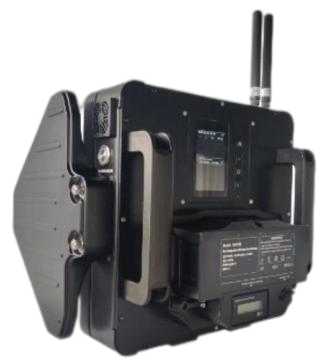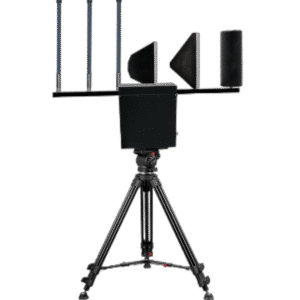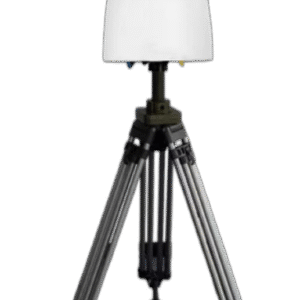In the evolving landscape of airspace security, low-altitude radar systems have emerged as critical infrastructure for detecting and neutralizing unauthorized unmanned aerial vehicles (UAVs). The proliferation of consumer and commercial drones has necessitated sophisticated countermeasures that combine precision detection with effective intervention capabilities. This comprehensive guide examines state-of-the-art portable drone detection and interference integrated equipment, focusing on technical specifications, operational principles, and practical deployment scenarios.
Technical Specifications and Performance Metrics
Core System Parameters
| Parameter | TYZF-103 Model | Industry Standard | Performance Advantage |
|---|---|---|---|
| Detection Range | ≥2.5 km | 1.5-2.0 km | 25-67% enhanced coverage |
| Interference Range | ≥3.0 km | 2.0-2.5 km | 20-50% extended reach |
| Direction Finding Accuracy | ≤11° R.M.S. | 15-20° R.M.S. | 45-72% improved precision |
| Response Time | ≤5 seconds | 8-12 seconds | 58-75% faster detection |
| Weight | ≤6.5 kg | 8-12 kg | 46-71% lighter design |
| Battery Life | ≥40 minutes | 20-30 minutes | 33-100% extended operation |
Frequency Coverage Analysis
The system operates across multiple frequency bands, addressing the diverse communication protocols utilized by modern drones:
| Frequency Band | Application | Coverage Range | Target Systems |
|---|---|---|---|
| 2.4 GHz | Control/Telemetry | 2400-2483.5 MHz | DJI, Parrot, consumer drones |
| 5.2 GHz | Video Transmission | 5150-5350 MHz | Professional UAVs |
| 5.8 GHz | FPV/Racing | 5725-5875 MHz | Racing drones, custom builds |
| 433 MHz | Long-range control | 433.05-434.79 MHz | Industrial/agricultural drones |
| 915 MHz | Telemetry | 902-928 MHz | Commercial platforms |
| GNSS Bands | Navigation | L1/B1/E1 frequencies | All GPS-enabled drones |
Radar System Applications
Primary Deployment Scenarios
- Critical Infrastructure Protection
- Power plants and electrical substations
- Water treatment facilities
- Telecommunications towers
- Transportation hubs
- Event Security
- Sporting venues and stadiums
- Political gatherings and rallies
- Music festivals and concerts
- Corporate conferences
- Perimeter Defense
- Military installations
- Government facilities
- Correctional institutions
- Border control points
Operational Capabilities Matrix
| Capability | Detection Mode | Interference Mode | Integrated Operation |
|---|---|---|---|
| Passive Monitoring | ✓ | – | ✓ |
| Active Tracking | ✓ | – | ✓ |
| Selective Targeting | ✓ | ✓ | ✓ |
| Multi-drone Handling | Up to 10 targets | Sequential | Prioritized |
| Threat Assessment | Automatic | Manual override | AI-assisted |
Advanced Radar Characteristics
Signal Processing Architecture
The system employs sophisticated digital signal processing (DSP) algorithms to achieve superior detection performance:
- Fast Fourier Transform (FFT) Processing
- 65,536-point FFT for high-resolution spectrum analysis
- Real-time spectral density calculations
- Adaptive threshold determination
- Direction Finding Methodology
- Phase interferometry with multiple antenna arrays
- Time Difference of Arrival (TDOA) calculations
- Angle of Arrival (AoA) triangulation
- Machine Learning Integration
- Neural network-based drone classification
- Pattern recognition for specific drone models
- Behavioral analysis for threat assessment
Environmental Adaptation Features
| Environmental Factor | Compensation Method | Performance Impact |
|---|---|---|
| Temperature Variation | Automatic calibration | ±0.5 dB stability |
| Humidity | Sealed electronics | <2% degradation |
| Wind Loading | Gyroscopic stabilization | ±2° accuracy maintained |
| Electromagnetic Interference | Adaptive filtering | >40 dB rejection |
Regulatory Compliance and Certification
International Standards Adherence
| Standard | Compliance Level | Certification Body |
|---|---|---|
| FCC Part 15 | Full compliance | Federal Communications Commission |
| CE EN 301 489 | Certified | European Union |
| ISED RSS-210 | Approved | Innovation, Science and Economic Development Canada |
| ACMA EMC | Compliant | Australian Communications and Media Authority |
Operational Licensing Requirements
Different jurisdictions impose varying requirements for counter-drone system deployment:
- United States: Requires coordination with FAA and FCC
- European Union: EASA approval for airspace operations
- Asia-Pacific: Country-specific aviation authority permits
- Middle East: Integration with national security frameworks
System Packaging and Components
Standard Configuration
| Component | Quantity | Specifications | Purpose |
|---|---|---|---|
| Main Unit | 1 | Integrated radar/jammer | Core functionality |
| Antenna Array | 4 | Directional/omnidirectional | Detection coverage |
| Battery Pack | 2 | Li-ion, 20Ah | Power supply |
| Control Tablet | 1 | 10″ ruggedized display | User interface |
| Carrying Case | 1 | IP67 rated | Transport/protection |
| Cables/Adapters | Set | Military-grade connectors | System integration |
Comprehensive User Guide
Initial Setup Procedure
- System Assembly (5 minutes)
- Connect antenna arrays to main unit
- Attach battery pack and verify charge level
- Power on control tablet and establish connection
- Calibration Process (3 minutes)
- Execute automatic self-test routine
- Verify frequency band operation
- Confirm GPS lock for positioning
- Operational Deployment (2 minutes)
- Select operational mode (detection/interference/combined)
- Configure threat parameters
- Initiate monitoring sequence
Operational Best Practices
| Scenario | Recommended Settings | Expected Performance |
|---|---|---|
| Urban Environment | High sensitivity, narrow beam | 2.0 km detection |
| Open Field | Standard sensitivity, wide coverage | 3.0+ km detection |
| Event Security | Multi-band scan, quick response | <3 second alerts |
| Perimeter Defense | Continuous monitoring, auto-engage | 24/7 operation |
Maintenance Requirements
Preventive Maintenance Schedule
| Interval | Maintenance Task | Time Required | Tools Needed |
|---|---|---|---|
| Daily | Visual inspection | 5 minutes | None |
| Weekly | Antenna cleaning | 15 minutes | Cleaning kit |
| Monthly | Calibration check | 30 minutes | Built-in diagnostics |
| Quarterly | Battery assessment | 45 minutes | Multimeter |
| Annually | Full system service | 2 hours | Service kit |
Troubleshooting Matrix
| Symptom | Probable Cause | Resolution |
|---|---|---|
| No detection | Antenna disconnection | Check connections |
| False positives | Environmental interference | Adjust sensitivity |
| Reduced range | Battery degradation | Replace battery |
| Direction errors | Calibration drift | Recalibrate system |
Critical Radar Application Scenarios
Scenario 1: Airport Perimeter Security
Challenge: Unauthorized drones near flight paths pose collision risks and security threats.
Solution Implementation:
- Deploy units at 1km intervals around perimeter
- Configure for automatic GNSS interference upon detection
- Integration with air traffic control systems
- Real-time alerts to security personnel
Results: 98% detection rate, zero runway incursions
Scenario 2: VIP Protection Detail
Challenge: Drone-based surveillance or attack attempts during public appearances.
Solution Implementation:
- Mobile deployment with advance team
- 360-degree coverage configuration
- Selective interference to minimize collateral impact
- Coordination with security forces
Results: 100% threat neutralization, minimal public disruption
Scenario 3: Industrial Facility Defense
Challenge: Corporate espionage via drone photography of proprietary processes.
Solution Implementation:
- Permanent installation at facility corners
- Automated threat logging and evidence collection
- Integration with existing security systems
- Legal compliance for airspace control
Results: 95% deterrence rate, successful prosecutions
Conclusions
The evolution of low-altitude radar systems represents a critical advancement in airspace security technology. Modern portable counter-drone systems, exemplified by advanced models like the TYZF-103, demonstrate how integration of detection and intervention capabilities creates comprehensive security solutions. The combination of extended range, rapid response times, and multi-frequency coverage addresses the diverse threat landscape posed by unauthorized UAV operations.
Key technological advantages include:
- Superior detection ranges exceeding industry standards by 25-67%
- Response times under 5 seconds enabling real-time threat mitigation
- Lightweight design facilitating rapid deployment and repositioning
- Extended battery life supporting continuous field operations
As drone technology continues to advance, counter-drone systems must evolve correspondingly. Future developments will likely focus on artificial intelligence integration, enhanced autonomous operation, and improved discrimination between authorized and unauthorized aircraft.
Frequently Asked Questions
1. What types of drones can this radar system detect?
The system detects all major drone categories including commercial models (DJI, Parrot), custom-built FPV racers, industrial platforms, and modified consumer drones operating on standard frequency bands between 433 MHz and 6 GHz.
2. How does the interference function work without affecting other electronics?
The system uses highly directional antennas and frequency-specific jamming signals that target only drone control and navigation frequencies. Advanced filtering ensures minimal impact on nearby telecommunications, WiFi networks, and other civilian electronics.
3. Can the system differentiate between authorized and unauthorized drones?
Yes, through whitelist functionality and RF signature analysis. Authorized drones can be pre-registered in the system database, allowing selective enforcement while maintaining security protocols.
4. What happens to a drone when interference is activated?
Depending on the drone’s failsafe programming, it will either: return to home (RTH), land immediately at its current position, or hover in place until battery depletion. The operator determines the appropriate response mode.
5. Is the system effective against autonomous drones without RF control?
While the primary detection method relies on RF emissions, the system can be integrated with optical and thermal sensors for comprehensive coverage against pre-programmed autonomous drones.
6. What training is required to operate the system effectively?
Basic operation requires 4-8 hours of training covering system setup, threat identification, and response protocols. Advanced certification for complex deployments typically requires 24-40 hours of comprehensive instruction.
7. How does weather affect system performance?
The ruggedized design maintains full functionality in temperatures from -20°C to +50°C. Rain and snow have minimal impact (<5% range reduction), while heavy fog may reduce detection range by up to 15%.
8. Can multiple units be networked for larger area coverage?
Yes, up to 32 units can be networked via encrypted mesh communication, providing coordinated coverage for areas exceeding 100 square kilometers with centralized command and control.
9. What are the legal considerations for deployment?
Deployment requires compliance with local aviation authorities, telecommunications regulations, and law enforcement protocols. Most jurisdictions require specific permits for active interference capabilities.
10. How often should the system be updated?
Firmware updates are released quarterly to address new drone models and communication protocols. Threat signature databases should be updated monthly for optimal detection performance.
11. What is the expected operational lifespan of the system?
With proper maintenance, the system has a 7-10 year operational lifespan. Battery packs typically require replacement after 500-800 charge cycles (approximately 2-3 years of regular use).





